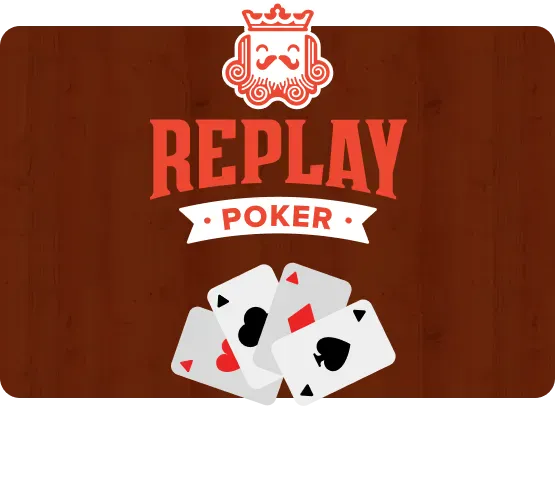Poker Hand Rankings
From Texas Hold’em to Omaha, Royal Hold’em, Stud and many more, there are more varieties of poker game out there than we can name.
Each may have their own rules, but one thing most of them share is the order of winning poker hands – the hierarchy of which hands beats which others.
This cards explains the specifics of all the poker hands you can make in most poker games, as well as which other hands they beat and those to which they’ll lose. If you’re just starting out at Replay Poker, we recommend bookmarking this page for easy reference.
Don’t forget that in the case of a tie the pot will usually be awarded to the hand which uses the highest ranking cards. That means a pair of aces beats a pair of kings, that a 9-high straight beats a 6-high straight, queens full beats jacks full, and so on.
If more than one player has the same hand, such as a pair of kings, then the next highest card in their hand – the ‘kicker’ – will be used to determine the winner. If winning hands are completely identical, they tie and split the pot. Suits are never used to determine a winner.
We’ll start with the best poker hand and work our way down the rankings.
Sign up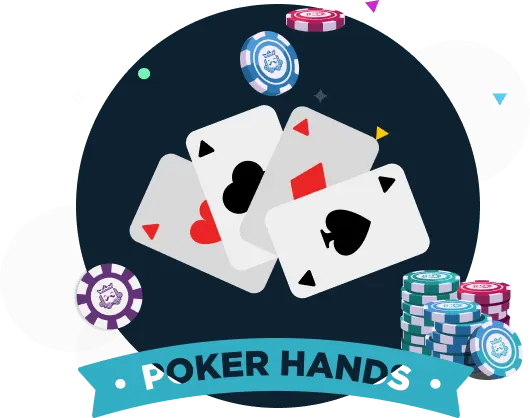
#1 – Royal Flush
Ts Js Qs Ks As
A straight flush is five cards in sequential order, all of the same suit. As this straight flush is all the way to the ace, it is known as a royal flush and is an unbeatable high hand.
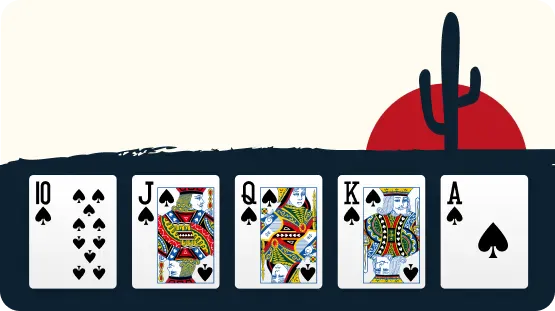
#2 – Straight Flush
4h 5h 6h 7h 8h
A straight flush that stops short of the ace is still one of the strongest hands in almost every poker game. It’s called a straight flush because it meets the requirements of both a flush and a straight (see below).
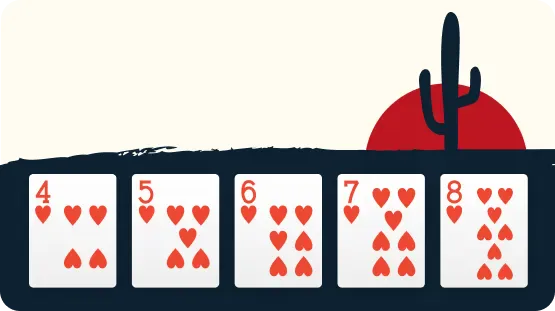
#3 – Four of a Kind
9h 9c 9s 9d Jh
Also known as ‘quads’, four of a kind is just what it sounds like: four cards of the same rank, plus any other card, such as 9c 9s 9d 9h Jh. In the case of a tie, the player with the higher ranked quads wins.
In flop games, or games using wildcards, more than one player may make the same set of quads, in which case the unmatched fifth card, or kicker, is used to determine the winner, so 7c 7s 7d 7h Jh beats 7c 7s 7d 7h Tc.
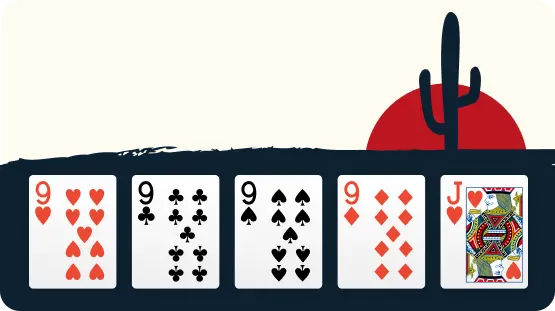
#4 – Full House
Qd Qh Qs Kd Ks
Also known as a ‘boat’, a full house consists of three-of-a-kind plus a pair. In the case of a tie the highest ranked three-of-a-kind wins, so 7s 7h 7d 4s 4c beats 6s 6h 6d As Ac.
In flop games and games with wild cards it’s possible for multiple players to have the same three-of-a-kind, in which case the highest accompanying pair wins, so 5h 5d 5s Qh Qc defeats 5h 5d 5s Js Jd.
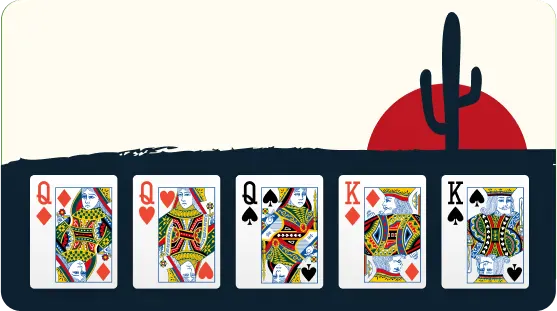
#5 – Flush
2d Td Qd 6d 5d
Five cards of the same suit make a flush. All suits are considered equal, so there’s no advantage in having a flush in any one suit rather than any other. Instead what differentiates one flush from another is the rank of the highest card. A flush with an ace-high is known as an ‘ace-high flush’ (or ‘the nut flush’), while a flush such as Qc Tc 7c 6c 4c would be called a ‘queen-high flush’.
In the case of a tie, the flush containing the highest ranked card will win – if multiple hands have the same highest card, ties are broken by the next card (or, if that is the same, the next card, and so on. Therefore Ad Kd Td 4d 2d beats Ad Kd Td 3d 2d.
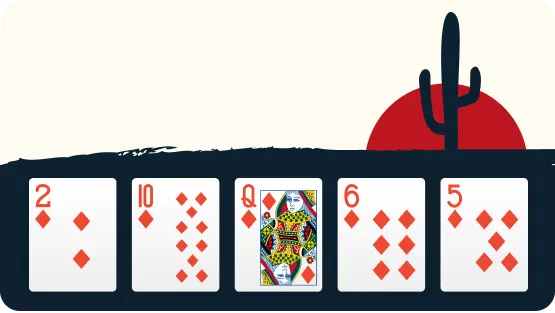
#6 – Straight
3h 4s 5s 6d 7s
Five cards in sequence – of any suits – make up a straight, and the highest card in the straight determines the winner in the event of a tie (e.g. Qc Js Ts 9h 8h beats Jc Th 9s 8s 7d).
Note that an ace in a straight may be considered either high (e.g. As Kc Qs Jd Th, the highest possible straight) or low (e.g. Ac 2d 3h 4h 5s, the lowest possible straight).
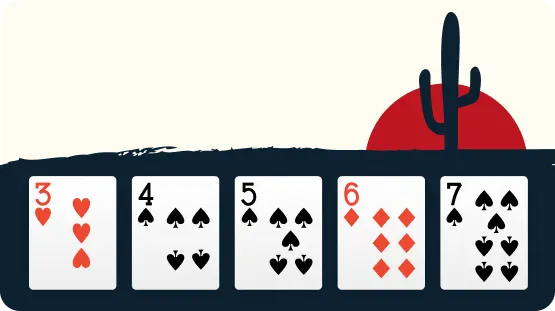
#7 – Three-of-a-Kind
5c 5h 5s 9h 2d
Three cards of the same rank, plus two unrelated cards, make up the poker hand three-of-a-kind. In flop games like Texas Hold’em, this hand is known as a ‘set’ when you have a pair in your hand and a third card on the board, or ‘trips’ when a single card in your hand matches a pair on the board.
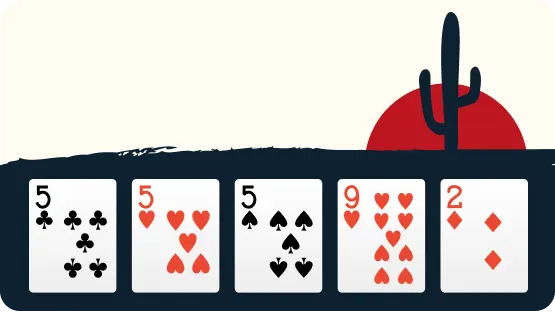
#8 – Two Pair
7h 7s 3d 3c Jh
A hand containing two pairs, plus a fifth unconnected card, is known as two pair. Ties are broken by the highest ranked pair or, if multiple players have the same high pair, the second pair.
In cases where multiple players have the same two pairs (a possibility in flop games), ties may be broken by the highest ranked fifth card. Therefore Kd Kc 7s 7h 2s beats Qs Qh Js Jc 9s (higher pair), As Ad Td Th 2c beats Ac Ah 8s 8h Ks (higher second pair), and 6s 6c 5h 5d As beats 6s 6c 5h 5d Ks (highest fifth card).
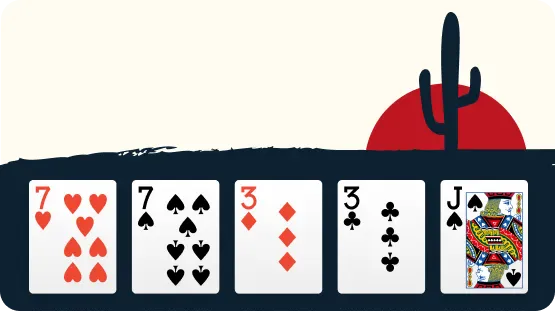
#9 – One Pair
Ks Kh 9s 5d 2h
As it sounds, this poker hand consists of a single pair of cards with the same rank, plus three other unconnected cards. Ties are won by the highest ranking pair, so 4s 4h 3c 5h 6d beats 3d 3h As Kd Qs, for example.
If multiple players tie for the high pair, the win goes to the next highest card (the kicker). If that’s also a tie, the next highest kicker breaks the tie, and so on. Therefore Ks Kh As Ts 5d beats Kd Kc Ad Td 4c.
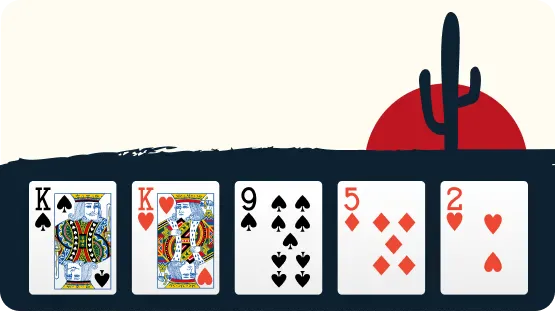
#10 – High Card
Ad-Jh-8h-5s-6c
If you don’t manage to make any of the hands above, your poker hand strength is determined by your highest card. Aces count high in this case, so ace-high is the best high card hand, with a 6-high being the very worst of the worst (A-3-4-5-6 of different suits).
As with most other hands, ties are broken by kickers, so if multiple players have the same high card, the next highest card wins. If all cards are identical, the pot is split.
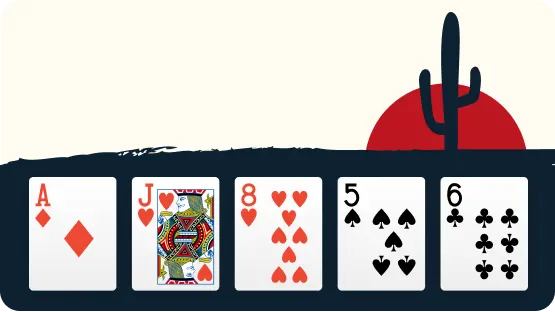
Ready to Play?
Now you know what beats what in a game of poker, it’s time to hit the tables! All you need is an email address.
Get started